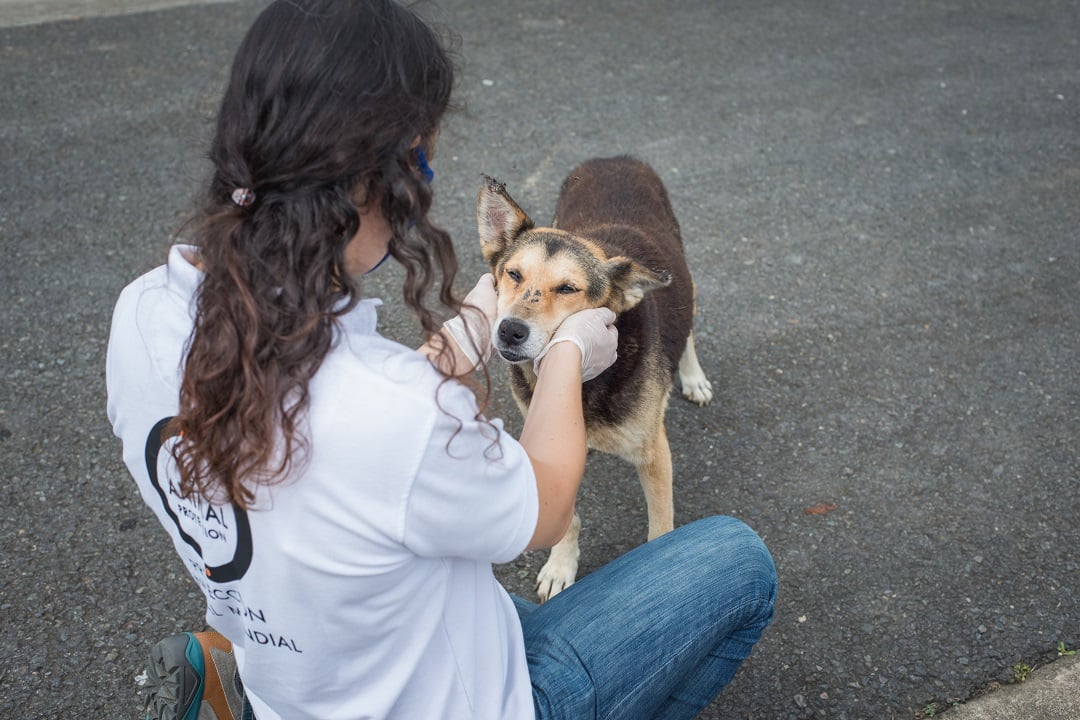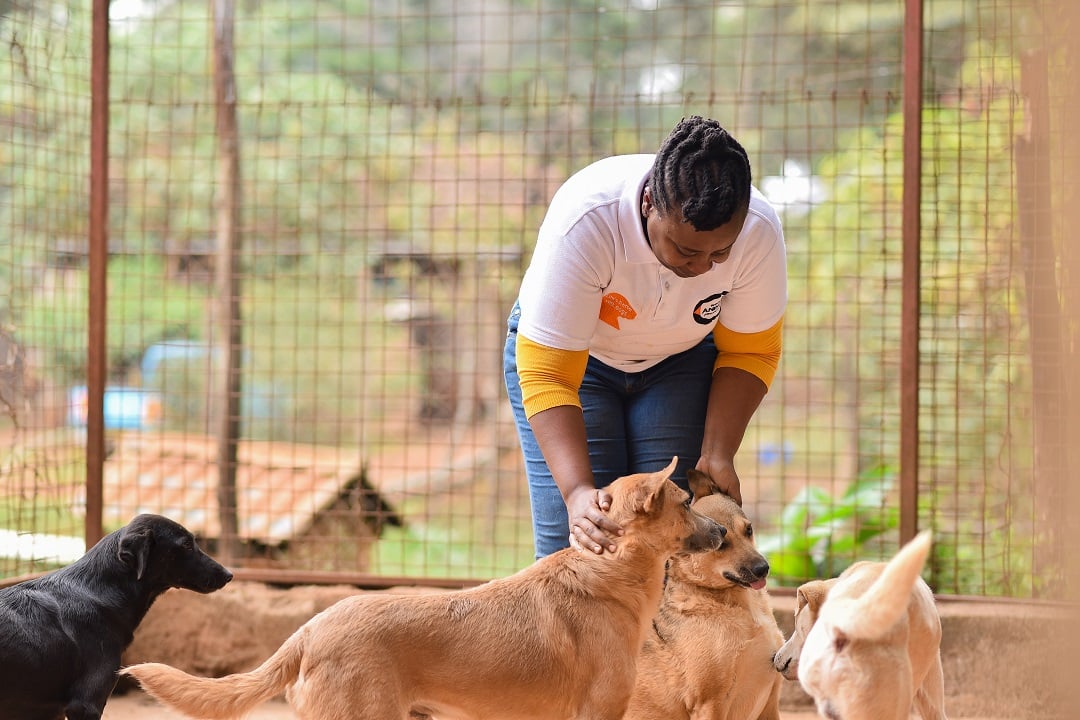One of the lucky ones: meet Bruno
News
Bruno is one of many lucky dogs across the world getting vaccinations to live the life they deserve, thanks to our vaccination program.

Stray dog populations can pose significant risks to communities, but the inhumane practice of culling (the mass killing of stray dogs) is not the answer. We can prevent rabies and end the cruel practice of culling through effective, humane solutions that improve the lives of dogs and foster harmony in communities.
Stray dogs may be perceived as a threat to public health due to their potential to spread diseases like rabies and other zoonotic diseases. They can also cause damage to livestock and wildlife or act aggressively towards people. However, governments often resort to culling as a “quick-fix” solution, neglecting the root causes such as irresponsible ownership and overbreeding.
Culling involves inhumane methods, such as electrocution, poisoning or gassing, causing immense suffering and trauma for both the dogs and the community workers involved. This practice is unsustainable, costly and does not address the underlying issues contributing to stray dog populations.
Not only is it inhumane, there are several reasons why culling is not an effective technique to manage stray dog populations:
Culling has been found to be largely ineffective in controlling stray dog populations in the long term. It often leads to a temporary reduction in numbers, but the population tends to rebound due to the remaining dogs reproducing and new dogs moving into the area. This results in a cycle of repeated culling, which is both inhumane and unsustainable.
Culling is a controversial practice that raises ethical concerns related to animal welfare. Mass killing of stray dogs is considered inhumane, as it causes extreme suffering and distress to the animals.
Culling can be costly, requiring resources for trapping, handling, and disposing of animals. These resources could be better utilized in implementing more sustainable and effective methods for stray dog population management, such as vaccination and sterilization programs.
Culling does not address the root cause of rabies, which is the lack of vaccination coverage in stray dog populations. Killing stray dogs does not eliminate the risk of rabies transmission to humans, as new dogs may move into the area or other animals may become infected. In fact, culling can disrupt the natural social structure of dog populations, potentially leading to increased aggression and higher risk of disease transmission.
There are more humane and effective alternatives to culling for managing stray dog populations and mitigating the risk of rabies spreading to humans. These include mass vaccination campaigns, sterilization programs to reduce reproduction rates, and community-based education and awareness initiatives to promote responsible pet ownership and safe interactions with stray dogs.
The most effective way to eliminate rabies is through mass vaccination campaigns. Vaccinating at least 70% of the dogs in an area creates 'herd immunity', slowing the spread of rabies until it dies out.
In addition to vaccinations, education and community engagement can help raise awareness about responsible pet ownership, safe interactions with stray dogs, bite prevention and the importance of rabies vaccination.
Sterilization programs, including spaying and neutering, can help reduce the reproduction rates of stray dogs, which can contribute to population control over the long term. Sterilization programs can also help reduce aggression and territorial behaviour in dogs, leading to decreased risks of conflict with humans and other animals. Additionally, sterilization can have positive health benefits for individual dogs, such as reducing the risk of certain diseases.
Adopting and rehoming programs are another way to help remove adoptable stray dogs from the streets and place them in loving homes.

World Animal Protection / Emi Kondo
We follow the International Companion Animal Management (ICAM) coalition’s dog population management methodology. It’s a full cycle of action, addressing the root causes of large free-roaming dog populations, which we use to help governments manage dogs humanely and to help communities live in harmony with dogs.
The solutions we reach together can involve educating owners and communities, legislation, dog registration, vaccinating against rabies, sterilization, rehoming – or a combination of some or all of these.
For decades, we ran campaigns to work with vets, communities, governments, and other nonprofit organizations to implement humane solutions in support of long-term and sustainable approaches to humane dog population management.
Our successes include administering over 1 million rabies vaccinations to dogs all over the world, celebrity ambassadors speaking out in support of humane methods, advocating against inhumane culling, and lobbying for humane solutions.
Our legacy work continues through our community partners, other nonprofit organizations, like Global Alliance for Rabies Control (GARC), and inter-governmental bodies like the World Organisation for Animal Health (OIE), who continue to fund programs and initiatives with the same long-term strategy.

News
Bruno is one of many lucky dogs across the world getting vaccinations to live the life they deserve, thanks to our vaccination program.
News
Bruno's case represents the resiliency and strength that her community and its dogs posses.
News
Global inter-governmental organizations have officially launched their framework to end dog-mediated rabies in humans by 2030 using our humane solutions.
News
The goal has been agreed to. The scene has been set. By 2030, rabies will be consigned to the history books without the use of cruel culling.
News
60,622 people around the world have successfully urged Mayor Decebal Făgădău of Constanța to stop the city’s cruel 'catch and kill' policy for dogs, and introduce a humane dog population management policy instead
News
Our work to protect dogs is inspiring change in several countries, most recently in Ghana
News
Together, we're working to create better lives for dogs across Africa.
News
Ambassadors including Aliya-Jasmine Sovani, Mike Bradwell, Carla Collins, Liisa Winkler, f David Dixon, Karman Wong, Gurdeep Ahluwalia, Candice Batista, Anthony Farnell have supported the campaign to help spread the word.